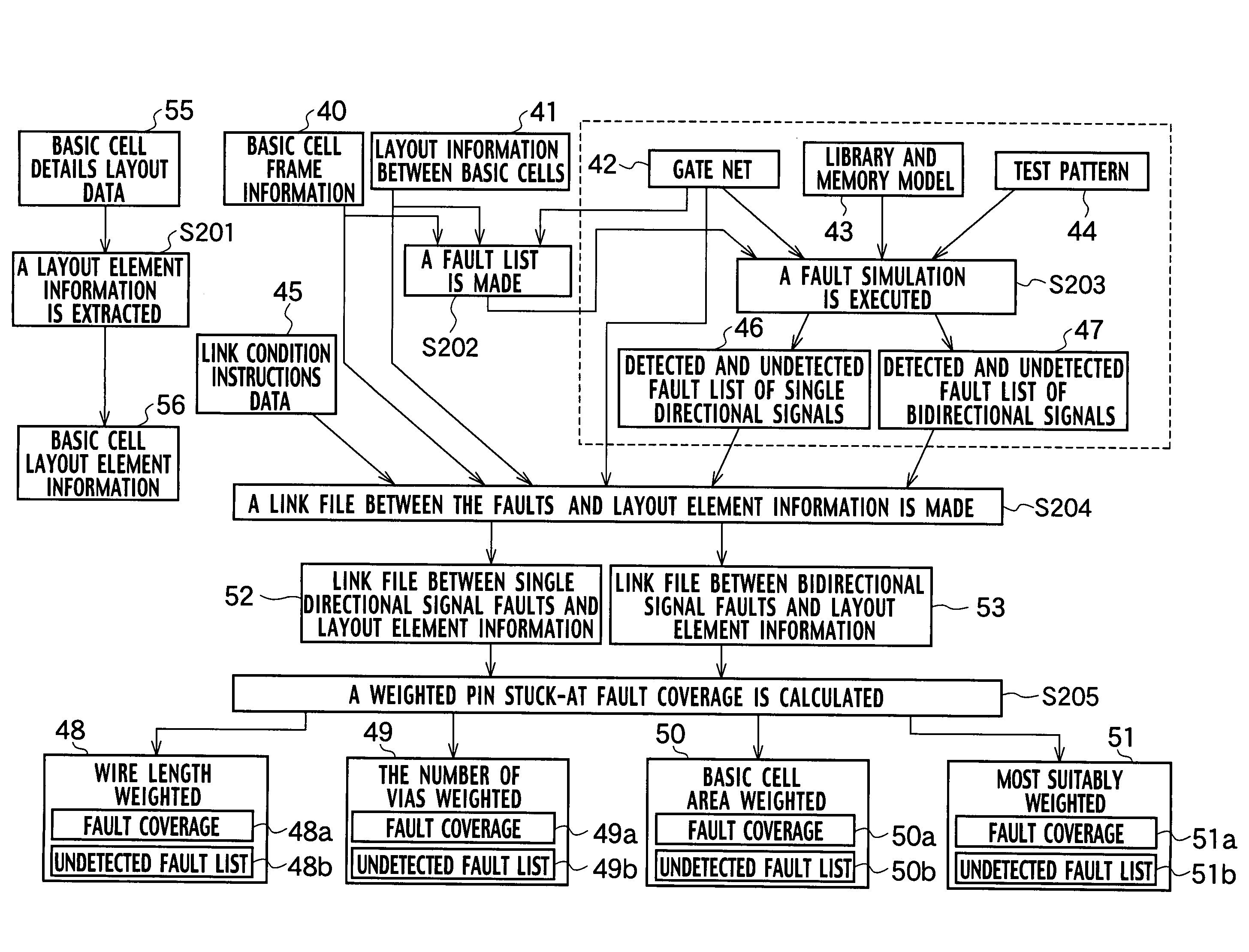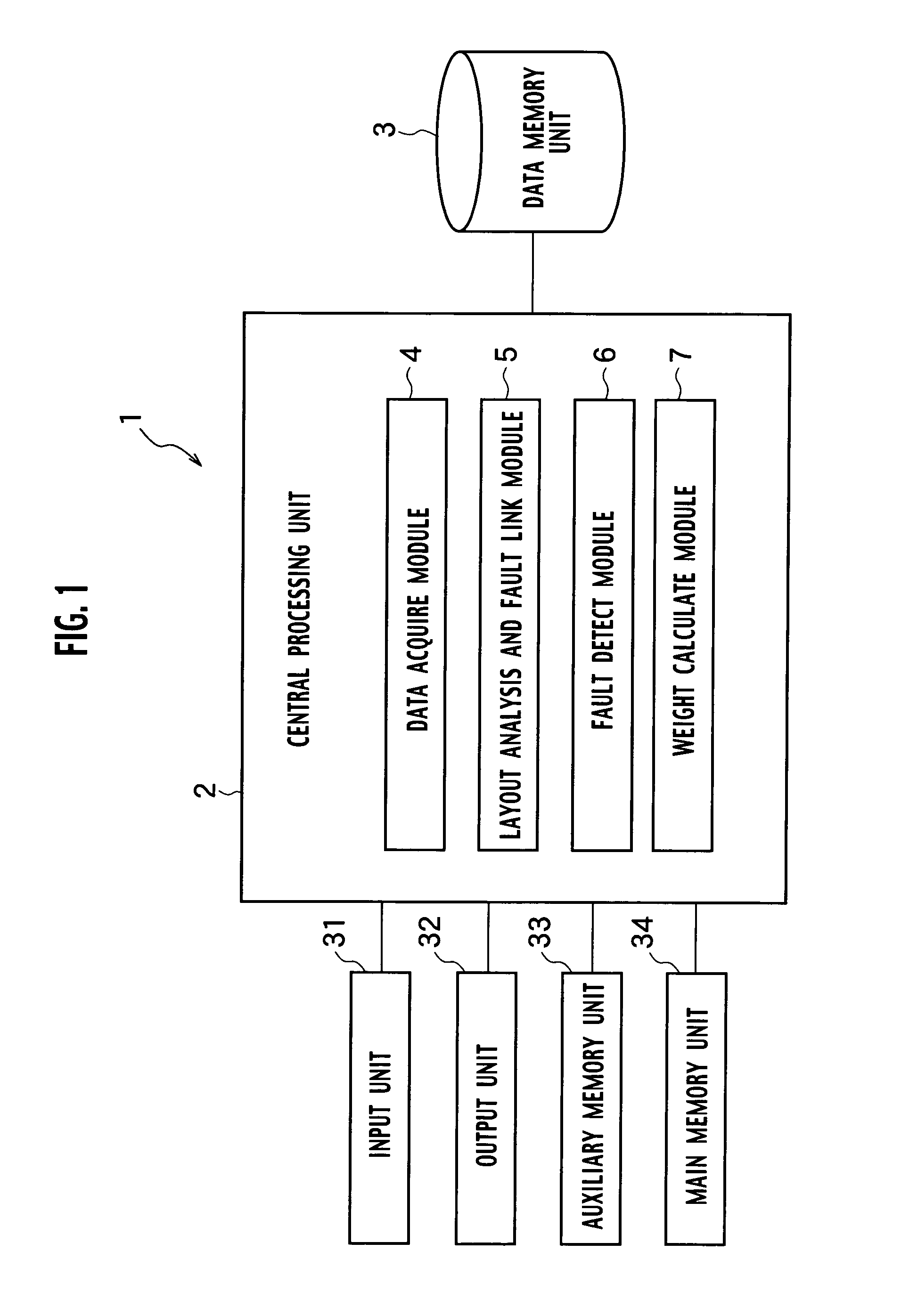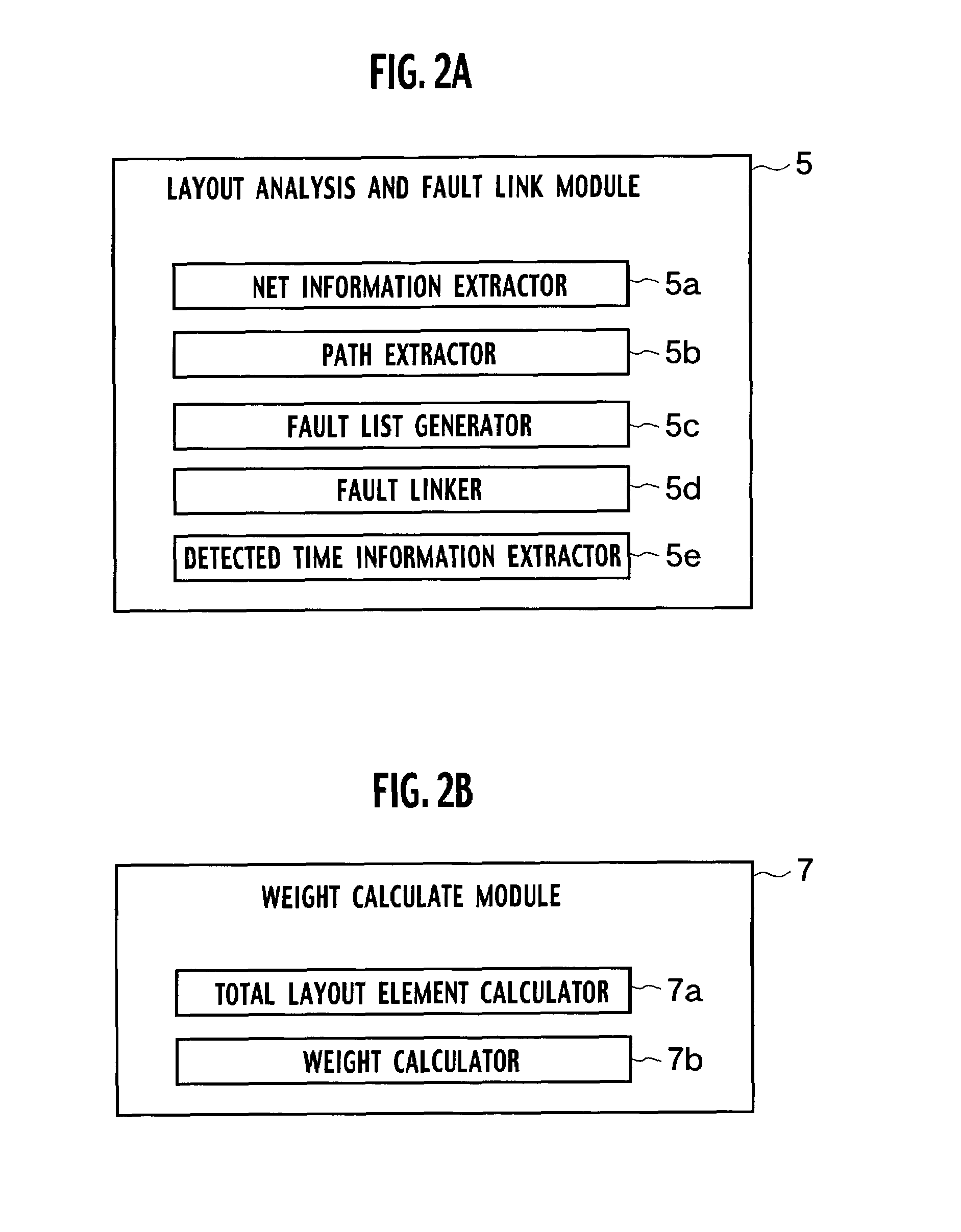Calculation system of fault coverage and calculation method of the same
a technology of fault coverage and calculation method, which is applied in the direction of error detection/correction, program control, instruments, etc., can solve the problems of not being formed properly, model cannot discern the detection of such open defects, and the fault coverage according to the rate of simply detected faults among the number of assumed faults has a serious problem
- Summary
- Abstract
- Description
- Claims
- Application Information
AI Technical Summary
Benefits of technology
Problems solved by technology
Method used
Image
Examples
first embodiment
[0038]A calculation system of fault coverage 1 according to a first embodiment of the present invention encompasses an input unit 31, an output unit 32, an auxiliary memory unit 33, a main memory unit 34, a central processing unit (CPU) 2, and a data memory unit 3.
[0039]The CPU 2 encompasses a data acquire module 4, a layout analysis and fault link module 5, a fault detecte module 6, and a weight calculate module 7. The data acquire module 4 acquires layout information and a gate net of an LSI and the like, from the data memory unit 3. The layout information includes layout pattern information, wire connection information, position information (coordinates) of both ends of wire elements (straight line portion), position information (coordinates) of vias; in addition, wire lengths, the number of the vias, and the like when appropriate. The layout analysis and fault link module 5 analyzes actual connection of input terminals and output terminals of basic cells regarding the entire lay...
concrete example
[0062]FIG. 9 is a flowchart showing an example of a method in the case of calculating the fault coverage by use of the fault simulation. FIG. 10 is a flowchart showing an example of a method in the case of calculating fault coverage by use of the ATPG. In the following, examples of the calculation method of fault coverage in accordance with the methods of FIGS. 9 and 10 using the calculation system of fault coverage according to the first embodiment of the present invention will be described with reference to FIGS. 11 and 12.
[0063](a) Firstly, in order to distinguish whether a fault is that concerning a single directional signal or that concerning a bidirectional signal before executing the fault simulation, in Step S121 of FIG. 11, the fault lists are generated for both the single directional signals and the bidirectional signals by use of the layout information between basic cells 41, the basic cell frame information 40, and the gate net 42 which have been stored in the data memor...
second embodiment
[0070]In the finer processes in the future, the number of wiring and the wire length between basic cells will be considerably increased along with an increase in the scale of an LSI, and the number of metal wire layers will be 10 layers or more. Since the importance of extraction of the layout elements between the basic cells will be increased, the first embodiment of the present invention did not mention defects, which may occur inside the basic cells, particularly. Meanwhile, there is also a possibility of an increase in faults at an element level such as short circuits between sources and drains of transistors. Such faults can be detected by the net stuck-at fault model. However, considering that a long CPU time is generally required for the fault simulation and the ATPG, it is not reasonable to execute two types (the net and the pin) of stuck-at fault models. Therefore, description will be given of a calculation system of fault coverage and a calculation method of fault coverage...
PUM
 Login to View More
Login to View More Abstract
Description
Claims
Application Information
 Login to View More
Login to View More - R&D
- Intellectual Property
- Life Sciences
- Materials
- Tech Scout
- Unparalleled Data Quality
- Higher Quality Content
- 60% Fewer Hallucinations
Browse by: Latest US Patents, China's latest patents, Technical Efficacy Thesaurus, Application Domain, Technology Topic, Popular Technical Reports.
© 2025 PatSnap. All rights reserved.Legal|Privacy policy|Modern Slavery Act Transparency Statement|Sitemap|About US| Contact US: help@patsnap.com



